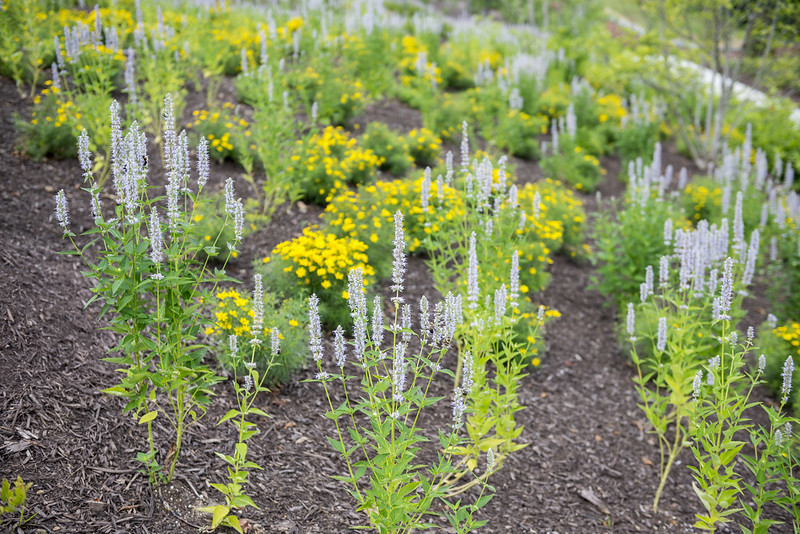Agastache and other types of Hyssop are tough plants that belong to the Mint family (Lamiaceae). These short-lived perennials appreciate soils that are on the dry and lean side. Overwatering Agastache will result in plants that have dense, lush growth, but also have a shorter lifespan (~2-3 years) in the garden. As part of a drought-tolerant landscape, Agastache will thrive with little supplemental irrigation and should be mulched annually with organic material such as arborist chips or pine straw.

How To Tell If Agastache Needs Watering
Agastache has very resilient and tough foliage that will only show symptoms of dehydration when the plant is very thirsty. Drooping leaves on the stem, drooping flower spikes, or flowers that fail to open altogether are signs that your plant needs watering as soon as possible. Because Agastache prefers less water than other herbs or edible plants, growing it alongside thirstier plants such as basil, sorrel, or oregano may result in overwatering and possible root rot. Plants suffering from root rot often look droopy and lifeless just like an under-watered plant, so make sure to feel the soil around the base of the plant to determine if watering is needed or if the roots need more time to dry out.
How Often To Water Agastache
Newly planted Agastache will require regular watering so that the soil stays evenly moist for good root establishment. Watering for longer periods, spaced out by 3-4 days, will help the roots grow deeper in the soil. The deeper roots ensure plants are more drought tolerant when fully established. One inch of water a week is recommended, including any natural rainfall.
Established and mature plants often only need supplemental watering during periods of extreme heat or drought. Mulching with 2-3 inches of organic compost or arborist chips in the early spring, as the new growth emerges, does a fabulous job of helping the soil retain moisture longer, cooling the root zone, and suppressing weeds. Make sure to put mulch down while the soil is still cool and on the moist side during the spring. Mulching dry soils in the summer can prevent moisture from reaching the root system. Drip irrigation systems or soaker hoses are very beneficial for keeping the foliage of Agastache dry and less susceptible to mildew and rust diseases.
Container-grown Agastache will require regular watering no matter how mature or established the roots are. Allow the top 2-3 inches of potting mix to dry between waterings. Water thoroughly until liquid drains out the bottom of the pot. During periods of high heat, daily watering may be necessary.
Best Time To Water Agastache
Watering is always best done early in the day while the soil is cooler and possibly still damp from the morning dew. Foliage that gets wet from overhead watering will have more time to dry before the cooler temperatures of the evening. Wet foliage makes Agastache, and other plants in the mint family, more susceptible to mildew and rust diseases. Watering in the winter is only required in the warmer USDA zones during temperatures above 50 degrees Fahrenheit or extended dry periods.
How to Water Agastache
Step 1 - Agastache requires more watering when newly planted
Provide one inch of water a week spread over 2-3 sessions to encourage deeper root growth.
Step 2 - Agastache prefers drier soil
Too much watering will shorten Agstache’s lifespan.
Step 3 - Water container-grown plants regularly throughout the growing season
Check for watering by feeling the weight of the container or feeling the soil down to 3 inches deep. Dry soil indicates the need for thorough watering.
Step 4 - Avoid wetting the foliage as much as possible
Wet foliage will increase the chances of mildew or rust diseases affecting Agastache and other members of the mint family.
Agastache Watering Tips
- Consistent watering initially helps new plants establish drought-tolerant root systems.
- Supplemental watering may only be needed during hot and dry periods once Agastache is mature.
- Use drip irrigation or soaker hoses for efficient watering and preventing moisture on the foliage.
- Mulching damp soil in the spring will help keep the soil cooler in the summer.
 |
Author Robbin Small - Published 7-16-2023 |
